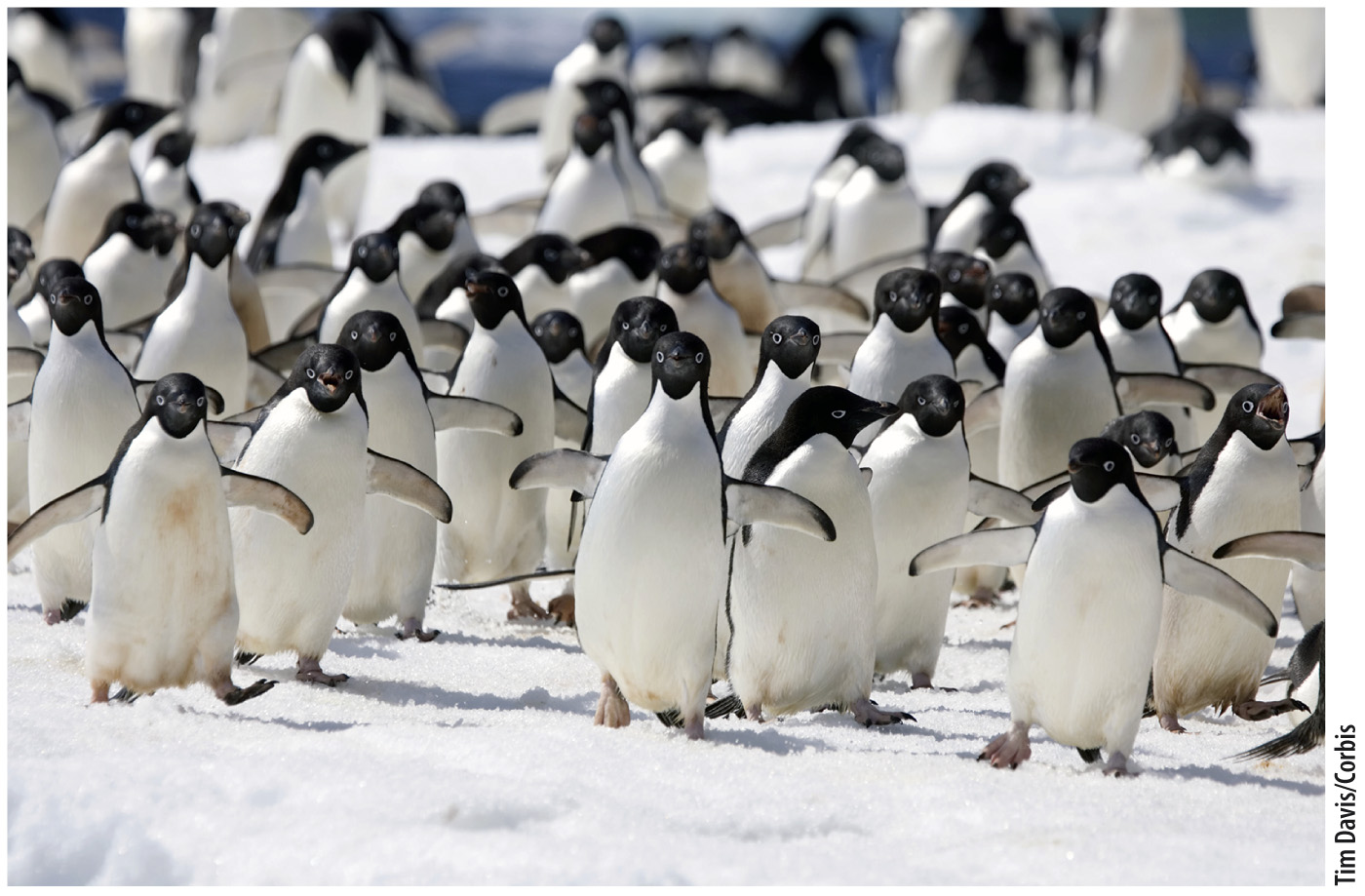Population genetics is the study of patterns of genetic variation.
Remarkably, in spite of a high degree of phenotypic variation, humans actually rank low in terms of overall genetic variation compared with other species. Any two randomly selected humans differ from each other on average by one DNA base per thousand (the two genomes are 99.9% identical), while two fruit flies differ by ten bases per thousand (the two genomes are 99% identical). Even one of the most seemingly uniform species on the planet, the Adélie penguins seen in Fig. 21.1, is two to three times more genetically variable than we are.

As we discuss in Chapter 22, a species consists of individuals that can exchange genetic material through interbreeding. From a genetic perspective, a species is therefore a group of individuals capable, through reproduction, of sharing alleles with one another. Individuals represent different combinations of alleles drawn from the species’ gene pool, that is, from all the alleles present in all individuals in the species. The human gene pool includes alleles that cause differences in skin color, hair type, eye color, and so on. Each one of us has a different set of those alleles—
Population genetics is the study of genetic variation in natural populations, which are interbreeding groups of organisms of the same species living in the same geographical area. What factors determine the amount of variation in a population and in a species? Why are humans genetically less variable than penguins? What factors affect the distribution of particular variations? Population genetics addresses detailed questions about patterns of variation. And small differences, given enough time, can lead to the major differences we see among organisms today.